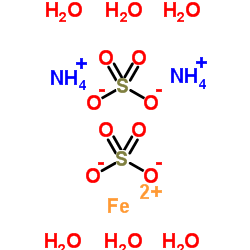Protective effect of propofol against kainic acid-induced lipid peroxidation in mouse brain homogenates: comparison with trolox and melatonin.
Hyung Lee, Young-Ho Jang, Seong-Ryong Lee
Index: J. Neurosurg. Anesthesiol. 17(3) , 144-8, (2005)
Full Text: HTML
Abstract
This study compared the effectiveness of propofol with that of trolox and melatonin for reduction of lipid peroxidation in vitro. Lipid peroxidation was induced by addition of kainic acid (KA; 10 mM), hydrogen peroxide (H2O2; 10 mM), or ferrous ammonium sulfate (5 microM) to mouse brain homogenate, and thiobarbituric acid-reactive substances (TBA-RS) were used as a marker of lipid peroxidation. Propofol, trolox, and melatonin reduced KA-, H2O2-, and ferrous ammonium sulfate-induced lipid peroxidation in a concentration-dependent manner. In reducing KA-induced lipid peroxidation, 50% inhibitory concentration (IC50) values of antioxidants were as follows: propofol (11.33 mM), trolox (4.00 mM), and melatonin (9.72 mM). In reducing H2O2-induced lipid peroxidation, IC50 values of antioxidants were as follows: propofol (56.86 mM), trolox (33.34 mM), and melatonin (26.63 mM). In reducing ferrous ion-induced lipid peroxidation, IC50 values of antioxidants were as follows: propofol (49.57 mM), trolox (60.35 mM), and melatonin (22.02 mM). Under the in vitro conditions of this experiment, propofol was an excellent and a very potent antioxidant in inhibiting KA-, H2O2-, and ferrous ion-induced lipid peroxidation in mouse brain homogenates. We conclude that the antioxidant properties of propofol at clinically relevant anesthetic concentrations may have a neuroprotective effect.
Related Compounds
| Structure | Name/CAS No. | Molecular Formula | Articles |
|---|---|---|---|
 |
Ferrous ammonium sulfate hexahydrate
CAS:7783-85-9 |
H20FeN2O14S2 |
|
Pulmonary effects of ultrafine and fine ammonium salts aeros...
2002-12-01 [Inhal. Toxicol. 14(12) , 1215-29, (2002)] |
|
Pulsed EPR study of amino acid and tetrahydropterin binding ...
2013-11-26 [Biochemistry 52(47) , 8430-41, (2013)] |
|
A novel automated method to measure total antioxidant respon...
2004-02-01 [Clin. Biochem. 37(2) , 112-9, (2004)] |
|
Contribution of hypoxia-inducible factor-1α to transcription...
2011-04-01 [Anim. Sci. J. 82(2) , 244-50, (2011)] |
|
Protective effects of several components of Gastrodia elata ...
2007-10-01 [Phytother Res. 21(10) , 960-4, (2007)] |